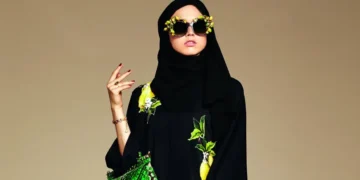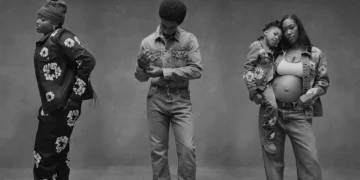
The abaya, a long flowing robe traditionally worn by women in Qatar and throughout the Middle East, has always carried deep cultural and religious meaning. As a central part of Qatari clothing, it conveys modesty, elegance, and identity. Over time, however, the abaya has undergone a remarkable shift. What was once regarded primarily as a simple garment has evolved into a dynamic piece of fashion that bridges heritage with contemporary design.
Designers across the region, particularly innovative names emerging from Qatar, are leading this transformation. By introducing new fabrics, inventive cuts, and subtle embellishments, they are redefining how the abaya is perceived both locally and globally. This development aligns with a growing international interest in modest fashion, which respects tradition while meeting the demands of modern lifestyles.
The Evolution of the Abaya
Historically, the abaya was most closely associated with a classic black silhouette, prized for its practicality and symbolism. As an essential part of Qatar traditional clothing, the simplicity of that form made it universally recognizable and deeply tied to cultural identity. In contemporary fashion, however, the abaya appears in an ever-expanding range of designs that showcase innovation while maintaining its traditional core.
Modern versions may feature:
-
Luxurious fabrics such as chiffon, silk, crepe, or satin
-
Intricate embroidery and embellishments that add visual richness
-
Innovative cuts and layering techniques that allow for both casual and formal use
-
Expanded color palettes, from soft neutrals and jewel tones to patterned designs
This evolution gives the abaya new versatility. It can be styled for everyday wear or adapted into elegant evening attire, always balancing modesty with individuality. The garment has become an expression of both personal taste and cultural continuity.

Cultural Identity and Modern Expression
Perhaps the most compelling aspect of the abaya’s transformation is its continued ability to serve as a bridge between tradition and modernity. For many women, wearing the abaya is not only about fashion but also about cultural pride and identity.
Designers exploring modern abaya fashion remain mindful of its roots. By incorporating traditional motifs, regional embroidery techniques, and heritage-inspired tailoring into updated silhouettes, they show that cultural authenticity can coexist with innovation. The result resonates with younger generations who wish to express themselves while remaining connected to their values. In this sense, the abaya has become a narrative thread tying together heritage and self-expression.
The Global Growth of Modest Fashion
The rise of the modern abaya forms part of a broader global movement: the rapid growth of modest fashion. Industry reports highlight that this market is expanding at a notable pace, fueled not only by Muslim consumers but also by women of varied backgrounds who appreciate modest clothing for its sophistication and versatility.
Runways in global fashion capitals such as Paris, London, and New York have featured modest fashion collections, underscoring its recognition within mainstream design. The abaya, with its adaptability and elegance, holds a central place in this shift.
Key factors driving this growth include:
-
Rising demand for garments that balance style and modesty
-
The influence of international fashion figures and digital creators showcasing modest wear
-
Increasing appreciation for cultural diversity in global fashion design
These factors have helped position the abaya as both a traditional garment and a modern icon, embraced within diverse contexts around the world.

Abaya Fashion in Qatar and Beyond
Qatar has emerged as a hub for abaya innovation. Local designers play an important role in shaping international perceptions of modest fashion by creating pieces that combine cultural significance with contemporary aesthetics. Their collections speak to women across the Middle East while also appealing to international audiences seeking clothing that offers refinement, modesty, and style.
From minimalist everyday designs that prioritize comfort to ornate pieces crafted for special occasions, the abaya demonstrates an impressive range. This adaptability has allowed it to transcend geographical boundaries and gain traction far beyond its place of origin. The evolution of the abaya underscores how garments rooted in tradition can thrive in a modern fashion world without losing their cultural essence.
The Future of the Modern Abaya
The journey of the abaya from traditional attire to contemporary fashion statement illustrates the evolving nature of clothing and culture. With the global modest fashion industry continuing to grow, the abaya is likely to experience even more experimentation in materials, cuts, and presentation. Designers may explore sustainable fabrics, digital tailoring, or cross-cultural collaborations, all while retaining the garment’s cultural core.
Yet through all of these changes, the abaya will remain significant. It will continue to symbolize modesty and cultural identity, while providing space for creativity and individuality. Its future lies in its balance: remaining deeply rooted in tradition while welcoming innovation that ensures its relevance to new generations of women.
Finally, the modern abaya is a symbol of how tradition can evolve while retaining its essence. From Doha’s streets to international fashion runways, the abaya demonstrates the strength of modest fashion as both cultural identity and contemporary expression. By combining heritage with innovation, it continues to inspire women around the globe.
Images from Dolce & Gabbana Abaya Collection – see full story here.



















